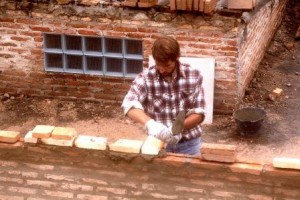
DUBOIS – As part of the Penn State DuBois Cultural Luncheon Series, Wildlife Technology Instructor Ed Vorisek recently made a presentation n his 2011 service trip to Paraguay. While in the South American Nation, Vorisek helped to construct a building that would serve as a community training center where locals learn how to sew to earn an income.
Hosted by the campus’ Student Affairs office, the Cultural Luncheon Series features speakers who share their experiences in other cultures and countries around the world. To complement the program, food from the culture that the presentation focuses on is served.
As guests experienced the tastes of Paraguay, Vorisek ran an extensive slide show of photos, and shared stories about the work he did on his faith-based service trip, and how it helped a community.
Vorisek traveled to Paraguay’s capitol city of Asuncion with a group of other volunteers from his home-town Methodist church in Conneautville. A couple who organized the service project had been working with the Methodist Bishop in Asuncion for several years to improve the lives of people in the Paraguayan community, and helped to establish the Bible Institute there, where locals have access to ministry and other faith-based services. Their latest project at the Bible Institute was the building of the Dorcas Sewing Center.
“They had been working for the last several years to build a small training center to teach local women to sew, as a supplement to their income,” Vorisek said. He explained that, upon hearing about the project, the timing was right for him to join the effort. “They needed an extra worker to help with the building. I had just been laid off from a teaching job, had always wanted to see South America, and really enjoy working with my hands; especially for a good cause. So, there was really no hesitation about going.”
The group spent two weeks working tirelessly to build the brick walls that would house the training center and second-floor dormitories. It was an on-going project that had started before Vorisek got there, and was not completed until after he got back state side. His participation in the building of the center, however, will always be a part of its history, and its legacy of improving the lives of those who are trained there.